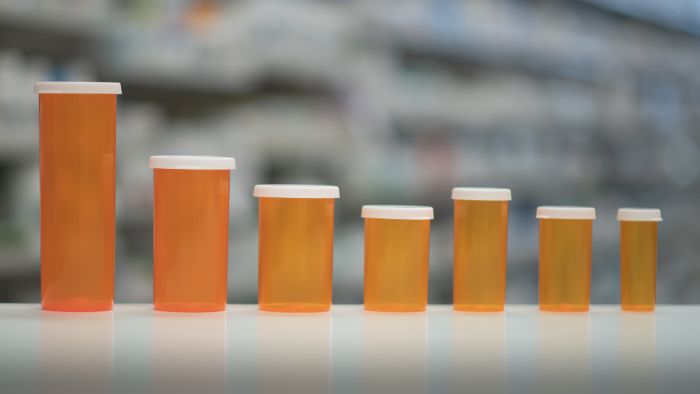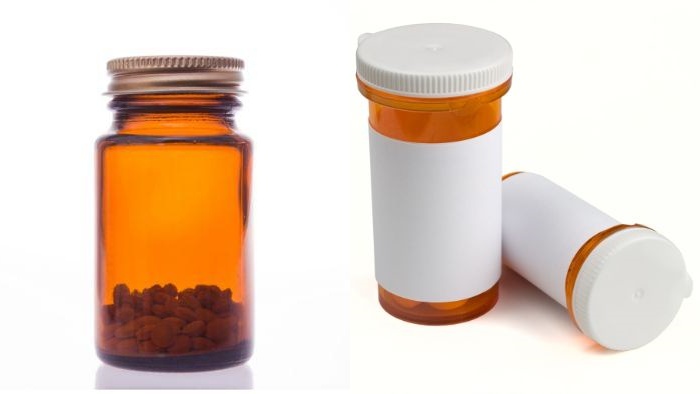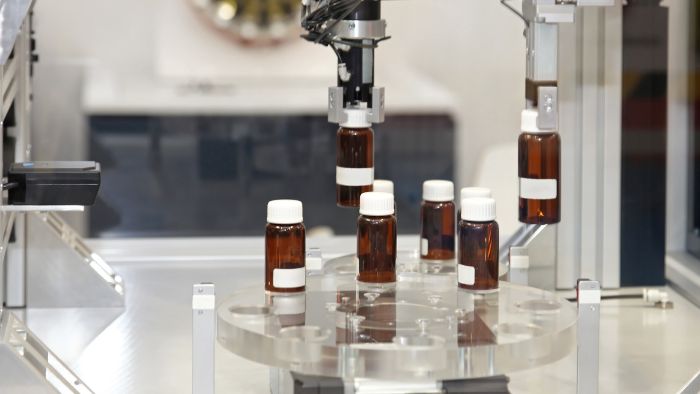Pill bottle sizes are important for keeping medications safe and easy to use. Choosing the right size means thinking about how well the bottle works and if it meets rules.
This guide shows why it’s important to pick the right pill bottle size and what to think about.
Different materials, like amber glass, help block harmful UV rays, making sure the medicines stay safe and work well.
Standard bottle sizes for capsules and pills
The pharmaceutical industry uses standard bottle sizes for different kinds of medicines. These sizes help both manufacturers and customers by keeping pills safe and organized.
Different bottle sizes make it easier for people to choose the right packaging for their pills and capsules based on how many they need.
Bottles can hold different amounts of pills, so it’s important to pick the right size. Common sizes include small, medium, and large bottles.
Small bottles hold 30 ml to 60 ml, which is good for a few pills, often for short-term use.
Medium bottles, around 100 ml to 150 ml, work for regular prescriptions.
Large bottles hold 200 ml or more and are used for bigger amounts or long-term medicines.
Examples of standard sizes include:
30 ml: Often used for small quantities of high-potency medications.
60 ml: Common for short-term prescriptions and over-the-counter pills.
100 ml: Standard size for a month’s supply of prescription medications.
150 ml and above: Used for bulk storage or long-term medications.

These standard sizes help ensure consistency across the industry, making it easier for consumers to recognize and use their medications correctly.
Factors to consider when selecting a bottle size
Choosing the right pill bottle size depends on a few important factors. Packer bottles are great for storing pills and vitamins because they have big openings that make filling and using them easy.
Vitamin bottles are also popular for holding pills and vitamins. They are easy to use because they have wide openings and are light to carry.
Quantity of pills
The number of pills you need to store helps decide what size bottle to use. It’s important to know how many capsules or tablets you have.
If you have a lot of pills, you need a bigger bottle. This way, the pills don’t get crowded, which can make them hard to use.
Pill size and shape
The size and shape of the pills help decide what size bottle to use.
Bigger pills or capsules, like supplements, need more space. Smaller pills, like pain relievers, fit in smaller bottles.
The shape of the pills is also important because oddly shaped pills need extra room so they don’t get damaged.
Clear bottles, made from a material called polyester, are good for holding solid medicines like candy tablets and liquid calcium.
These bottles let you see the colors of the medicines, which makes them look nice.
Here are the number of tablets, their quality, and the bottle sizes you can choose from:
| Pill Size (mm) | Single Pill Volume (ml) | Pill Quantity | Bottle Size (ml) |
| 5 x 5 x 5 | 0.125 | 100 | 15 |
| 6 x 6 x 6 | 0.216 | 75 | 15 |
| 8 x 8 x 8 | 0.512 | 50 | 30 |
| 10 x 10 x 10 | 1 | 25 | 30 |
| 12 x 12 x 12 | 1.728 | 15 | 30 |
| 15 x 15 x 15 | 3.375 | 10 | 50 |
| 18 x 18 x 18 | 5.832 | 7 | 50 |
| 20 x 20 x 20 | 8 | 5 | 100 |
Regulatory requirements
Medicine packaging needs to follow special rules to keep people safe and healthy.
These rules tell us what kind of bottles can be used for different medicines, which helps decide the right bottle size.
Following these rules is important to protect people and make sure the medicine stays good.
Materials and design
The materials and design of pill bottles are very important for keeping medicine safe and easy to use. Common materials for pill bottles are plastic and glass, and each has its benefits.
Amber-colored bottles help protect the medicine from harmful light and look nice.
Plastic bottles are light, strong, and less expensive, so they are a popular choice. They are less likely to break, which helps keep the medicine safe. Blue and green are common colors for plastic bottles.
Dark amber and cobalt blue are also nice colors for both plastic and glass bottles. Glass bottles protect medicine from moisture and air, so they work well for medicines that need extra care.
The design of the bottle helps make it easy to use. Features like child-proof caps, seals that show if they have been opened, and easy-to-open lids make the bottles safer and more convenient. The design should also have enough space for labels to show all the important information.

Volume capacity and dimensions
Knowing how much space a pill bottle can hold is important for choosing the right size. The bottle needs to fit the number and size of the pills so they have enough room.
Measuring the space helps avoid problems like too many pills being crowded together or having too much empty space, which can make the medicine less safe to use.
We usually measure volume in milliliters (ml) or cubic centimeters (cc). It’s important for manufacturers to pick a bottle that gives enough space for the pills while still being easy to hold and use.
Customizable options
Many pill bottles come in standard sizes, but you can also get special sizes made just for your needs. Custom bottles can be made to fit different pill shapes and amounts. This helps with branding and keeping medicine safe.
Custom sizes are especially helpful for new or special medicines that don’t fit in regular bottles. By talking to packaging suppliers, companies can make bottles that work best for them.
Labeling and branding
Good labeling and branding are very important for medicine bottles. The size of the bottle affects how much space is available for labels. This space helps show important information clearly.
Labels need to have the medicine name, how much to take, the expiration date, and the batch number. The bottle should be big enough for all this information so people can use the medicine safely.
Branding matters too because the bottle’s size and design make it look nice. A good-looking bottle with clear labels helps people remember the brand.
Viallabeller’s pharma labeling machines can make your medicine bottle labels look great and can provide solutions for labeling medicine bottles.
Environmental considerations
Taking care of the environment is very important for medicine packaging. The size and material of the bottle can affect how much waste is made.
Eco-friendly materials, like biodegradable plastics or recycled stuff, are used more often now.
Choosing the right bottle size can help reduce waste by using less packaging.
Good packaging design makes it better for the environment and matches what people want when they choose sustainable products.

Conclusion
In conclusion, picking the right pill bottle sizes is very important for keeping medicine safe and easy to use and storage. You need to think about how many pills there are, their size, and the rules about packaging.
Standard sizes are useful because they are the same and easy to find. Custom sizes help when you need something special. Good labels and taking care of the environment make medicine packaging even better.







